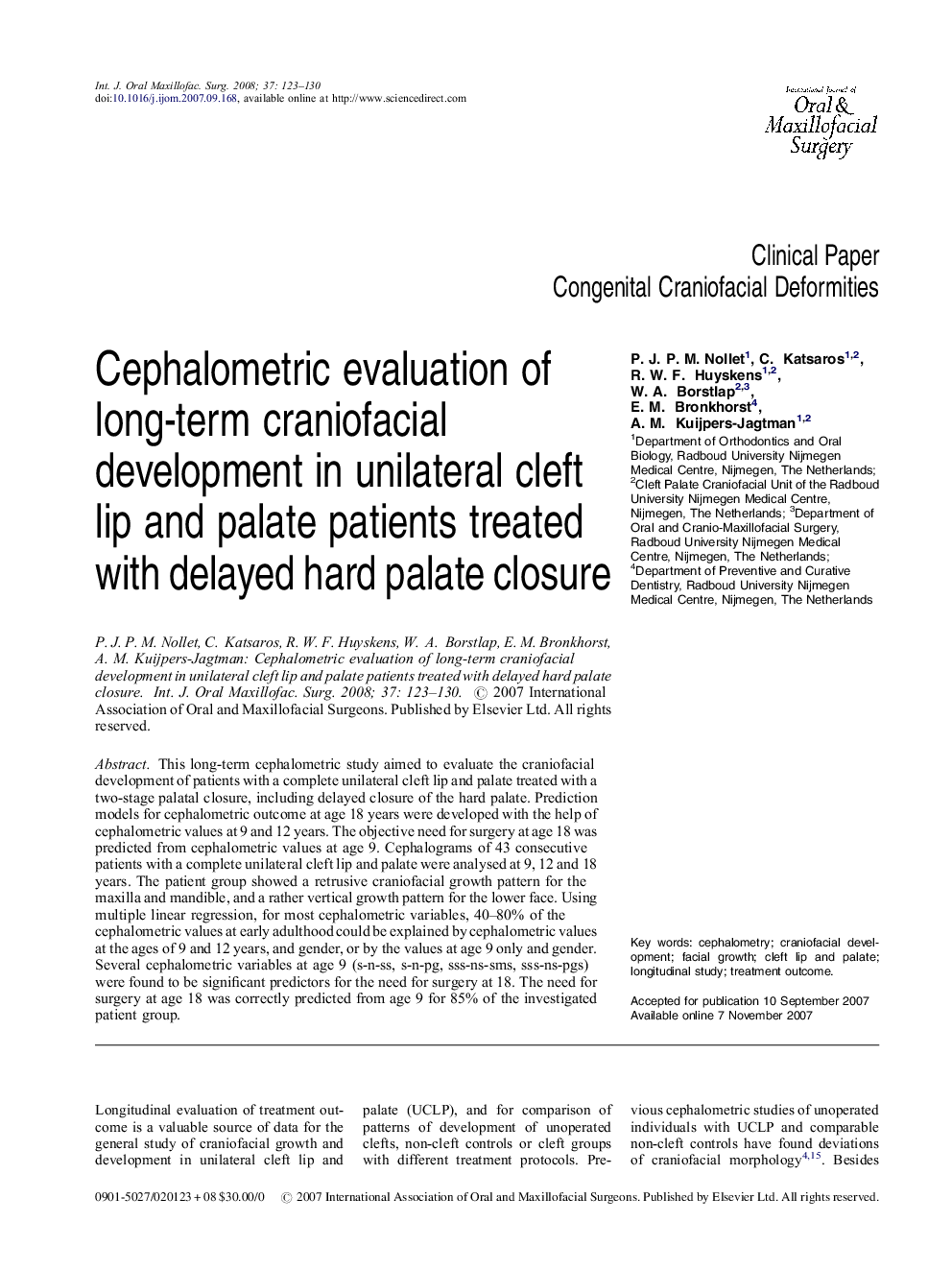| Article ID | Journal | Published Year | Pages | File Type |
|---|---|---|---|---|
| 3134598 | International Journal of Oral and Maxillofacial Surgery | 2008 | 8 Pages |
Abstract
This long-term cephalometric study aimed to evaluate the craniofacial development of patients with a complete unilateral cleft lip and palate treated with a two-stage palatal closure, including delayed closure of the hard palate. Prediction models for cephalometric outcome at age 18 years were developed with the help of cephalometric values at 9 and 12 years. The objective need for surgery at age 18 was predicted from cephalometric values at age 9. Cephalograms of 43 consecutive patients with a complete unilateral cleft lip and palate were analysed at 9, 12 and 18 years. The patient group showed a retrusive craniofacial growth pattern for the maxilla and mandible, and a rather vertical growth pattern for the lower face. Using multiple linear regression, for most cephalometric variables, 40-80% of the cephalometric values at early adulthood could be explained by cephalometric values at the ages of 9 and 12 years, and gender, or by the values at age 9 only and gender. Several cephalometric variables at age 9 (s-n-ss, s-n-pg, sss-ns-sms, sss-ns-pgs) were found to be significant predictors for the need for surgery at 18. The need for surgery at age 18 was correctly predicted from age 9 for 85% of the investigated patient group.
Keywords
Related Topics
Health Sciences
Medicine and Dentistry
Dentistry, Oral Surgery and Medicine
Authors
P.J.P.M. Nollet, C. Katsaros, R.W.F. Huyskens, W.A. Borstlap, E.M. Bronkhorst, A.M. Kuijpers-Jagtman,
